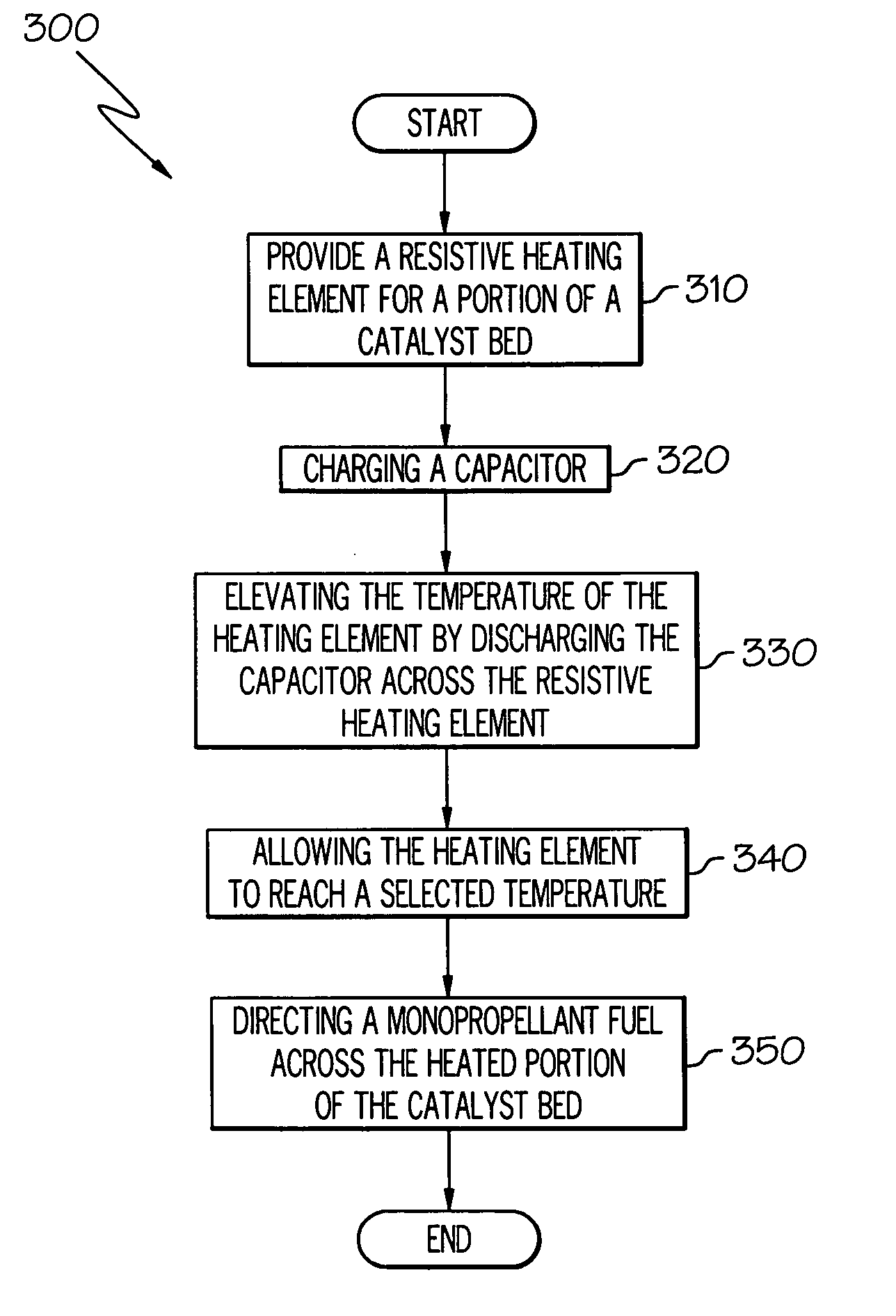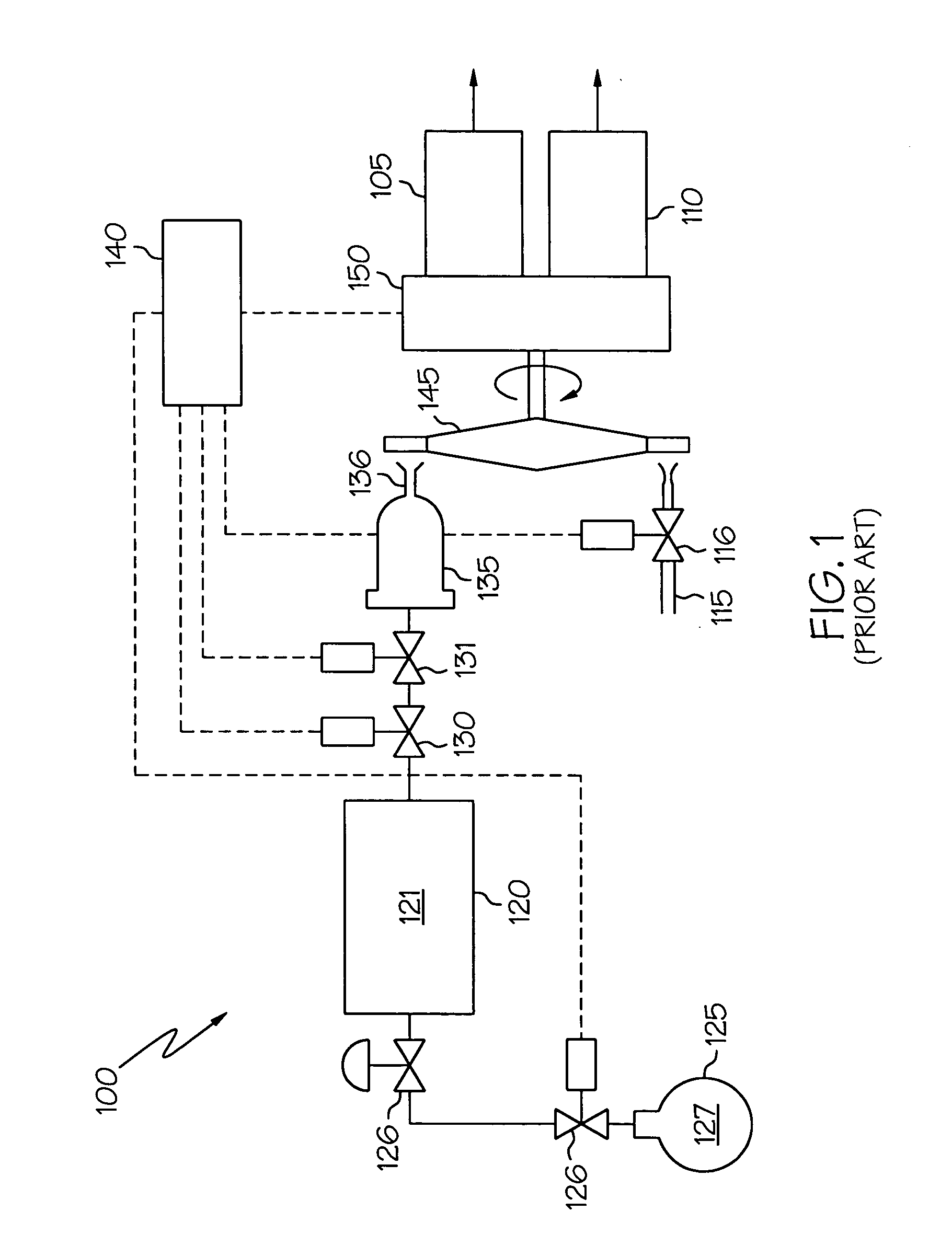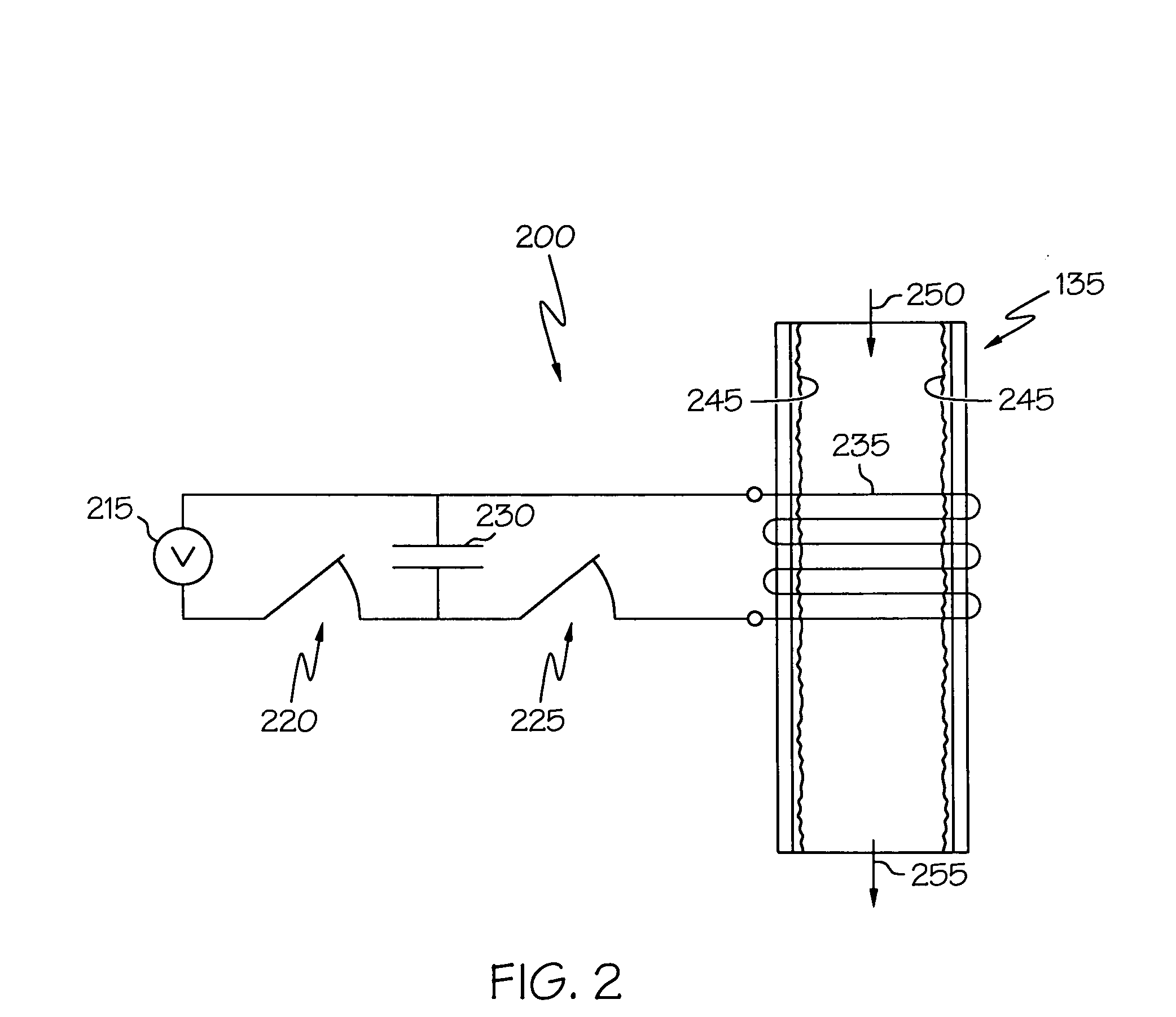Thermal catalytic ignition system for airborne applications
a catalytic ignition and airborne technology, applied in the direction of electric fuzes, lighting and heating apparatus, separation processes, etc., can solve the problems of toxic and a suspected carcinogen, low density of fuel and air storage, and the tendency of jet fuel and air systems to impose a greater weight penalty on airborne systems, etc., to promote the reaction
- Summary
- Abstract
- Description
- Claims
- Application Information
AI Technical Summary
Benefits of technology
Problems solved by technology
Method used
Image
Examples
Embodiment Construction
[0021] The following detailed description is of the best currently contemplated modes of carrying out the invention. The description is not to be taken in a limiting sense, but is made merely for the purpose of illustrating the general principles of the invention, since the scope of the invention is best defined by the appended claims.
[0022] The invention may find application in the area of airborne emergency power systems, where the system may be powered by a monopropellant fuel that may be reacted by catalytic action in a catalytic reactor. The invention may be used when a loss of power may necessitate the rapid initiation of an EPU in airborne applications where weight and operation under low temperature conditions are a consideration. The invention may find additional application as orbital alignment thrusters for use in satellites or spacecraft.
[0023] The environment in which such systems must operate has a temperature as low as about −54° C., but the reaction of such monopro...
PUM
| Property | Measurement | Unit |
|---|---|---|
| temperature | aaaaa | aaaaa |
| temperature | aaaaa | aaaaa |
| temperature | aaaaa | aaaaa |
Abstract
Description
Claims
Application Information
 Login to View More
Login to View More - R&D
- Intellectual Property
- Life Sciences
- Materials
- Tech Scout
- Unparalleled Data Quality
- Higher Quality Content
- 60% Fewer Hallucinations
Browse by: Latest US Patents, China's latest patents, Technical Efficacy Thesaurus, Application Domain, Technology Topic, Popular Technical Reports.
© 2025 PatSnap. All rights reserved.Legal|Privacy policy|Modern Slavery Act Transparency Statement|Sitemap|About US| Contact US: help@patsnap.com



